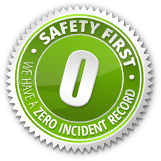Tips From A Professional Demolition Company
A building demolition is a thoroughly researched, carefully orchestrate project. Demolition contractors must have integrity and be conscientious about both employee safety and environmental safety. Without those characteristics, they risk losing their business licenses. Just like general contractors, demolition crews must follow OSHA standards for employee safety, and they must follow EPA standards that guide environmentally safe demolition techniques. Hazardous materials must be safely removed prior to demolishing a building.
Innovative Demolition Techniques
Some forward-thinking demolition teams, such as SV Demolition, already exceed government standards and are using innovative methods to reuse and recycle old building materials instead of sending them to a landfill. Because we have such an expert perspective on how to best take down a building, we can offer efficient tips to residential contractors on building methods, material selection, and more.
Focusing on the environmentally-friendly lessons of demolition has distinct cost-value for residential contractors, who face consumer demand for green construction methods. Cradle-to-cradle construction techniques that plan for green demolition later on can contribute points to LEED certification. The following is a review of some things we urge residential builders to take into consideration.
Limiting exposure to dangerous chemicals
Of course, residential building contractors are aware of the dangers of asbestos, lead and other hazardous materials in home construction. New homes do not contain these toxic substances, but it’s not unusual for residential contractors to be hired for retrofitting work to bring an older home up to code. These are several examples of irritating, but not illegal, hazards that residential construction workers may encounter while working in older buildings:
- Synthetic mineral fibers (SMF). These are fibrous materials made from ceramic, fiberglass and rock wool. Studies have found that SMFs aren’t as noxious as asbestos, so they are still used in sound and thermal protection products. Irritation to the eyes, nose and throat is the most common symptom of SMF exposure, but some experts question whether SMFs may also contribute to lung cancer, since they sometimes contain fiberglass. SV Demolition recommends that workers wear respirators and protective clothing when SMF contact is possible.
- Wood dust containing formaldehyde. This wood dust can become stuck in the nasal passages when inhaled, and it is thought to have caused nasal cancer in some woodworkers. Wood paneling and particleboard sometimes contain formaldehyde; when the wood is cut or otherwise manipulated, formaldehyde-laced dust is sent into the air, posing a major risk for nearby workers. For this reason, demolition contractors recommend wearing protective respiration gear when dealing with particleboard and paneling.
We will continue our list of tips for residential builders in our next blog post. For more information about SV Demolition and our expert, safe methods, contact us today at 408.218.0993.

